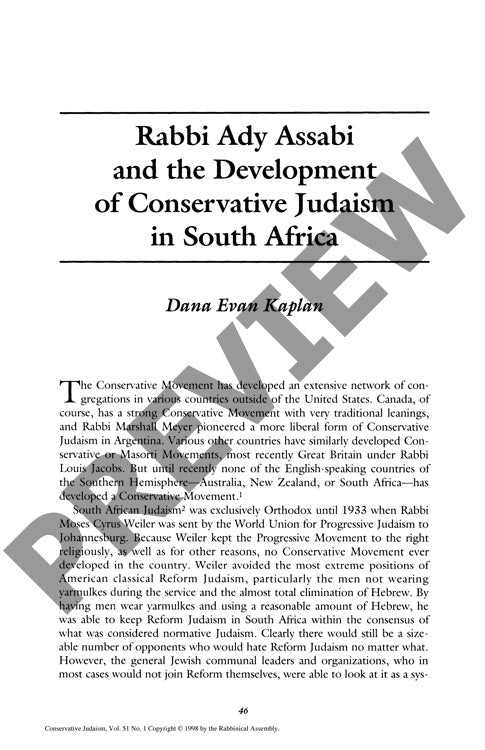Rabbi Ady Assabi and the Development Of
Couldn't load pickup availability
In 1993, Rabbi Ady Assabi led his Johannesburg congregation through a remarkable transformation from Reform to Conservative Judaism, establishing the first significant Conservative presence in the English-speaking Southern Hemisphere. Through historical analysis and interviews, this research traces Assabi's theological innovations and institutional reforms at Congregation Shalom from the mid-1980s through the 1990s. Congregational documents, newsletters, and movement correspondence reveal how Assabi strategically withdrew from the Southern African Union for Progressive Judaism while implementing traditional Conservative practices, including stricter conversion requirements, increased Hebrew liturgy, and enhanced halakhic observance. His distinctive critique of both "non-observant" South African Orthodox Judaism and American-influenced Reform Judaism provided the ideological foundation for this shift. While Assabi successfully developed indigenous liturgical materials and instituted significant congregational changes, his influence remained confined to Congregation Shalom rather than catalyzing a broader movement. The Conservative alternative faced considerable obstacles, including social isolation, established competition from Orthodox and Reform institutions, and challenges in youth engagement. This case study illuminates both the possibilities and limitations of religious innovation in post-apartheid South Africa, demonstrating how individual leadership, while transformative at the congregational level, may struggle to achieve wider denominational change.

More Information
-
Physical Description
-
Publication Information
Published
ISBN
-
Publication Credits
Dana Kaplan

